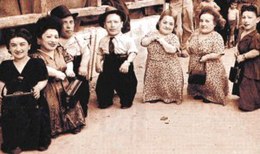
Auschwitz concentration camp was a complex of over 40 concentration and extermination camps operated by Nazi Germany in occupied Poland during World War II and the Holocaust. It consisted of Auschwitz I, the main camp (Stammlager) in Oświęcim; Auschwitz II-Birkenau, a concentration and extermination camp with gas chambers; Auschwitz III-Monowitz, a labour camp for the chemical conglomerate IG Farben; and dozens of subcamps. The camps became a major site of the Nazis' Final Solution to the Jewish question.
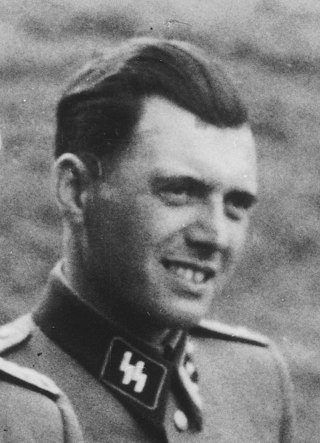
Josef Rudolf Mengele was a German Schutzstaffel (SS) officer and physician during World War II. Nicknamed the "Angel of Death", he performed deadly experiments on prisoners at the Auschwitz II (Birkenau) concentration camp, where he was a member of the team of doctors who selected victims to be murdered in the gas chambers, and was one of the doctors who administered the gas.

Sonderkommandos were work units made up of German Nazi death camp prisoners. They were composed of prisoners, usually Jews, who were forced, on threat of their own deaths, to aid with the disposal of gas chamber victims during the Holocaust. The death-camp Sonderkommandos, who were always inmates, were unrelated to the SS-Sonderkommandos, which were ad hoc units formed from members of various SS offices between 1938 and 1945.

The Romani Holocaust or the Romani genocide was the planned effort by Nazi Germany and its World War II allies and collaborators to commit ethnic cleansing and eventually genocide against European Roma and Sinti peoples during the Holocaust era.
This is a selected bibliography and other resources for The Holocaust, including prominent primary sources, historical studies, notable survivor accounts and autobiographies, as well as other documentation and further hypotheses.

The Women's Orchestra of Auschwitz was formed by order of the SS in 1943, during the Holocaust, in the Auschwitz II-Birkenau extermination camp in German-occupied Poland. Active for 19 months—from April 1943 until October 1944—the orchestra consisted of mostly young female Jewish and Slavic prisoners, of varying nationalities, who would rehearse for up to ten hours a day to play music regarded as helpful in the daily running of the camp. They also held a concert every Sunday for the SS.
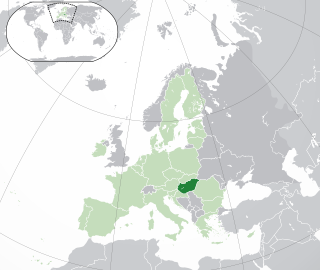
The history of the Jews in Hungary dates back to at least the Kingdom of Hungary, with some records even predating the Hungarian conquest of the Carpathian Basin in 895 CE by over 600 years. Written sources prove that Jewish communities lived in the medieval Kingdom of Hungary and it is even assumed that several sections of the heterogeneous Hungarian tribes practiced Judaism. Jewish officials served the king during the early 13th century reign of Andrew II. From the second part of the 13th century, the general religious tolerance decreased and Hungary's policies became similar to the treatment of the Jewish population in Western Europe.
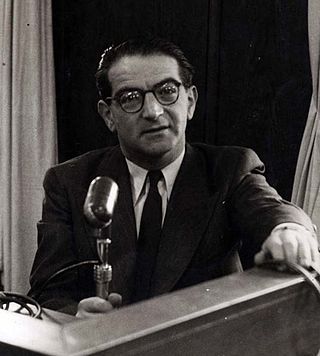
Rezső Kasztner, also known as Rudolf Israel Kastner, was a Hungarian-Israeli journalist and lawyer who became known for having helped a small group of Jews escape from occupied Europe during the Holocaust but not informing the majority about the reality of what awaited them in Auschwitz, leading to thousands of deaths. He was assassinated in 1957 after an Israeli court accused him of having collaborated with the Nazis.
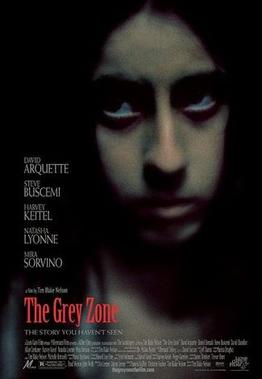
The Grey Zone is a 2001 American historical drama film written and directed by Tim Blake Nelson and starring David Arquette, Steve Buscemi, Harvey Keitel, Mira Sorvino, and Daniel Benzali. It is based on the book Auschwitz: A Doctor's Eyewitness Account written by Dr. Miklós Nyiszli.

The Kastner train is the name usually given to a rescue operation which saved the lives of over 1,600 Jews from Hungary during World War 2. It consisted of 35 cattle wagons that left Budapest on 30 June 1944, during the German occupation of Hungary, ultimately arriving safely in Switzerland after a large ransom was paid to the Nazis. The train was named after Rudolf Kastner, a Hungarian-Jewish lawyer and journalist, who was a founding member of the Budapest Aid and Rescue Committee, a group that smuggled Jews out of occupied Europe during the Holocaust. Kastner negotiated with Adolf Eichmann, the German SS officer in charge of deporting Hungary's Jews to Auschwitz in German-occupied Poland, to allow over 1,600 Jews to escape in exchange for gold, diamonds, and cash. The deal was controversial and has been the subject of much debate and criticism, with some accusing Kastner of collaborating with the Nazis, while others argue that he made difficult choices to save lives.

Rudolf Vrba was a Slovak-Jewish biochemist who, as a teenager in 1942, was deported to the Auschwitz concentration camp in German-occupied Poland. He escaped from the camp in April 1944, at the height of the Holocaust, and co-wrote the Vrba-Wetzler report, a detailed report about the mass murder taking place there. The report, distributed by George Mantello in Switzerland, is credited with having halted the mass deportation of Hungary's Jews to Auschwitz in July 1944, saving more than 200,000 lives. After the war, Vrba trained as a biochemist, working mostly in England and Canada.
Miklós Nyiszli was a Hungarian prisoner of Jewish heritage at Auschwitz concentration camp. Nyiszli, his wife, and young daughter, were transported to Auschwitz in June 1944. Upon his arrival, Nyiszli volunteered as a doctor and was sent to work at No. 12 barracks where he operated on and tried to help the ill with only the most basic medical supplies and tools. He was under the supervision of Josef Mengele, a Schutzstaffel officer and physician.

Gisella Perl was a Hungarian Jewish gynecologist deported to Auschwitz concentration camp in 1944, where she helped hundreds of women, serving as an inmate gynecologist for them. She worked without the bare necessities for practicing medicine. Perl survived the Holocaust, emigrated to New York, and was one of the first women to publicize the Holocaust experience in English, in her 1948 memoir I Was a Doctor in Auschwitz. She became a specialist in infertility treatment at Mount Sinai Hospital, New York and eventually moved with her daughter to live in Herzliya, Israel, where she died.

George Mantello, a businessman with various diplomatic activities, born into a Jewish family from Transylvania, helped save thousands of Hungarian Jews from the Holocaust while working for the Salvadoran consulate in Geneva, Switzerland from 1942 to 1945 under the protection of consul Castellanos Contreras, by providing them with fictive Salvadoran citizenship papers. He publicized in mid-1944 the deportation of Hungarian Jews to the Auschwitz-Birkenau death camp, which had great impact on rescue, rapidly led to unprecedented large-scale grass root protests by the Swiss people and church, which was a major contributing factor to Hungary's regent Miklós Horthy stopping the transports to Auschwitz.

During the Holocaust, children were especially vulnerable to death under the Nazi regime. An estimated 1.5 million children, nearly all Jewish, were murdered during the Holocaust, either directly by or as a direct consequence of Nazi actions.
Berthold Epstein was a pediatrician, professor, and scientist who was conscripted as a doctor in the Auschwitz concentration camp during World War II.

The Höcker Album is a collection of photographs believed to have been collected by Karl-Friedrich Höcker, an officer in the SS during the Nazi regime in Germany. It contains over one hundred images of the lives and living conditions of the officers and administrators who ran the Auschwitz-Birkenau concentration camp complex. The album is unique and an indispensable document of the Holocaust; it is now in the archives of the United States Holocaust Memorial Museum (USHMM) in Washington, D.C.
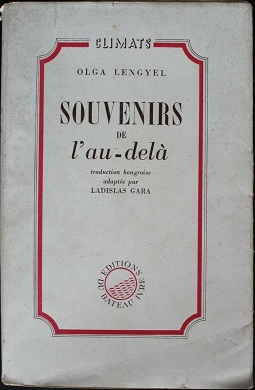
Five Chimneys, originally published 1946 in French as Souvenirs de l'au-delà, is the memoir of Olga Lengyel about her time as a prisoner in the Nazi concentration camp Auschwitz.

The Holocaust in Hungary was the dispossession, deportation, and systematic murder of more than half of the Hungarian Jews, primarily after the German occupation of Hungary in March 1944.
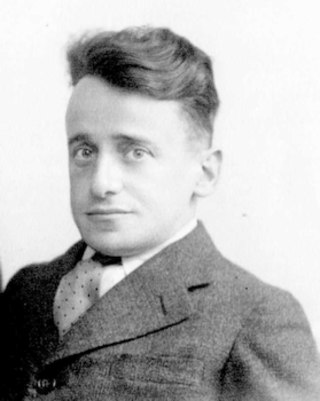
Alexander Katan was a Dutch Jewish accountant, translator, and teacher, who was murdered by the Nazis in the Holocaust, after which time his photographs were notoriously on display in various museums.
